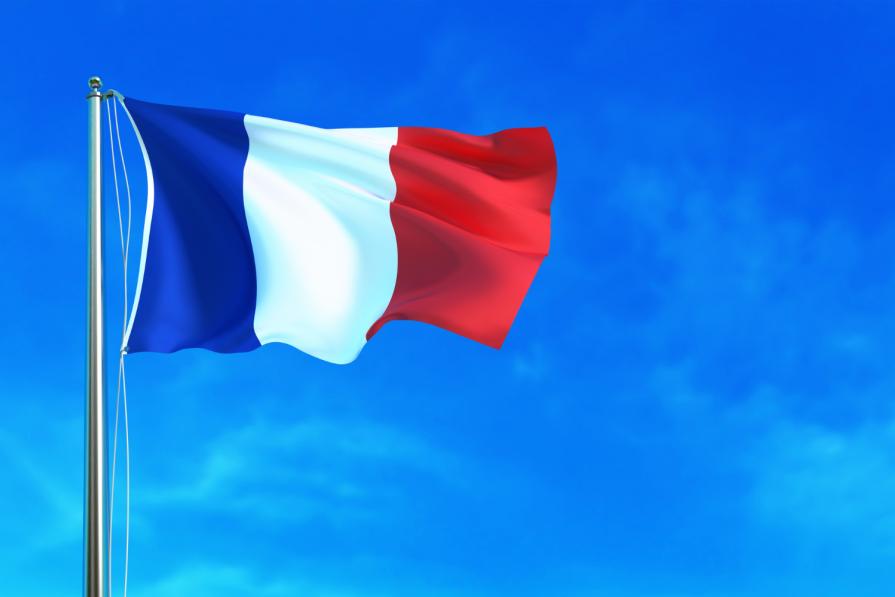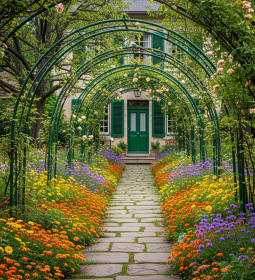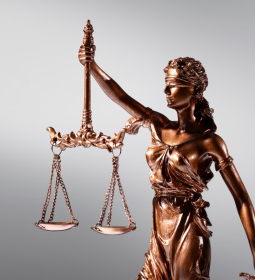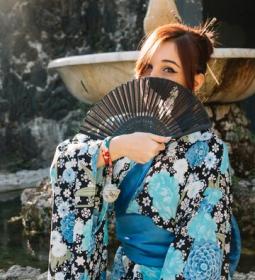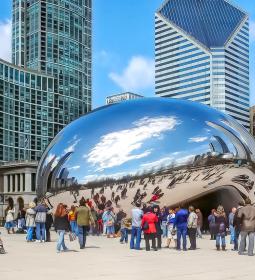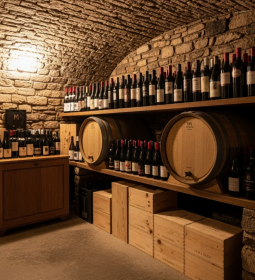The flag of the French state is a vertical tricolor with stripes of blue, white and red, from left to right. It is considered one of the most influential and revered in the world and Europe, copied by dozens of countries and has long personified progress at the peak of the monarchy, the clerical foundations and conservatism of Britain and its other neighbors.

During the old regime, a great many variants of flags were used: the most common was the combination of a blue shield with a cross and heraldic lines of white color. The rebellious Parisians, who made a major contribution to the success of the French Revolution, wore cockades of blue and red color, originally inherent in this city. Lafayette wrote that white was a tribute to history – and was also added to the colors of the cockade, which became an indispensable part of the uniform of the National Guard troops that replaced the militia.
Such colors were used until the restoration, then in 1815-1930 the white flag of the Bourbons returned. The July Revolution returned to the previous state of affairs, and minus a short break, the flag remained so to this day.

Symbolism
Blue is the color of St. Martin, and red is identified with Saint-Denis - the main Parisian saints and monasteries. They are also associated with the Virgin Mary, the saint of the patron saint of France, and were the flowers of the oriflemma, the ancient banner of the French kings.
Also, the flag is an allusion to the three estates of France before the revolution: the white clergy, the red nobility and the blue bourgeoisie. The extreme colors, which also denote class (for blue) and nobility, are separated by white, which in turn pays tribute to order.

History
In the early Middle Ages, kings going to war took from the altar in the abbey of Saint-Denis the sacred Oriflemma - a red flag with several long tongues, which was the royal banner of the Capetian. Another religion was the red cloak of St. Martin, which was supposed to protect the king's person.
In the Middle Ages, this color was steadily associated with the ruling house. Then, in 1328, with the suppression of the House of Capet, the new house of Valois chose for itself a blue with gold heraldic lily in a red border.
The time of the Hundred Years' War is a period of extreme simplification of symbols. English was soltir - red cross, and France symbolized white, equally used on a red and blue background. Blue field eventually began to be used more often, it became the main one for the regiments of the French army.
And with the accession of the third branch of the Capetian, the Bourbons, it was time for the white: first he replaced the green adopted in the navy, and then established himself in all spheres of the state system. After the revolution, white turned into tricolor.
Among others, the two-tone cockade, the main symbol of the revolution, was even put on by the French monarch when he was offered it at the Hîtel de Ville. The third – white – appeared thanks to the insistence of Lafayette, who proposed to emphasize continuity in the past.
In October 1890, a new flag with a vertical tricolor was approved by a session of the Constituent Assembly; in 1794 the colors were reversed, swapping red and blue. This remained until 1815, when the restoration, together with the shabby house of Bourbon, returned to the country its pre-revolutionary symbols with heraldry. However, 15 years later, the king-citizen Louis-Philippe was forced under pressure from the next revolutionaries to return the conquest of the republic and establish it as a national one.

Having overthrown Napoleon III, who remained loyal to the flag of the Republic, but proclaimed himself emperor of the French, a majority of royalists were elected to the new Constituent Assembly, after which the newly elected parliament decided to hand over the crown to Henri de Chambord. One of the conditions of the latter was the replacement of the tricolor flag with a white one - but the deputies could not go for it. With the restoration of the Bourbons, they decided to wait, and then completely forgot - and since then the country has been a republic.
With a short break from 1940-1944: the collaborationist regime of Philippe Pétain in Vichy abandoned the use of republican terminology, and France became a "state". Formally, the symbol was the tricolor, but more often used a personal Petenov standard: in it in the middle of the white stripe there was a lictor axe and a marshal's rod. Supporters of de Gaulle also imposed on the colors of the flag a red Lorraine cross - as a tribute to the memory of the virgin Joan, who returned the king to France and a good name, coupled with independence from the British during the Hundred Years' War.
All post-war constitutions contained a norm that enshrined the state tricolor.
By the way - during the events of 1968, floral became extremely popular, along with the revolutionary interpretation: they say, colors personify flowers - blue cornflower, white - daisies, and red - flaming poppies.

